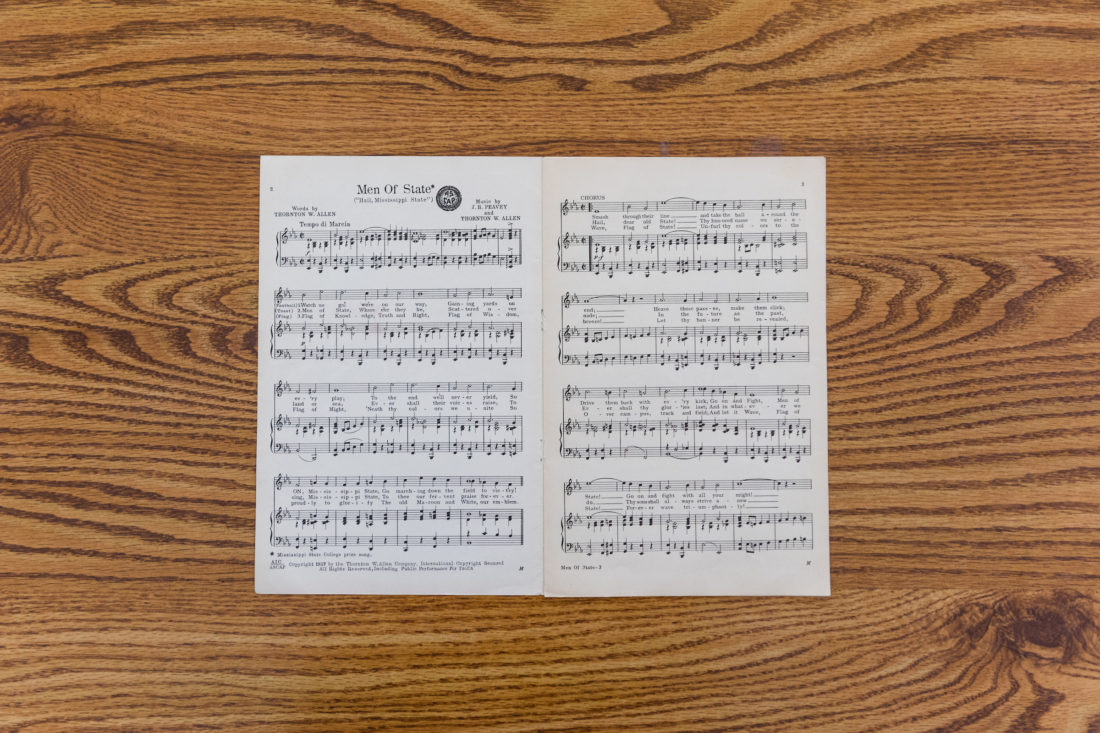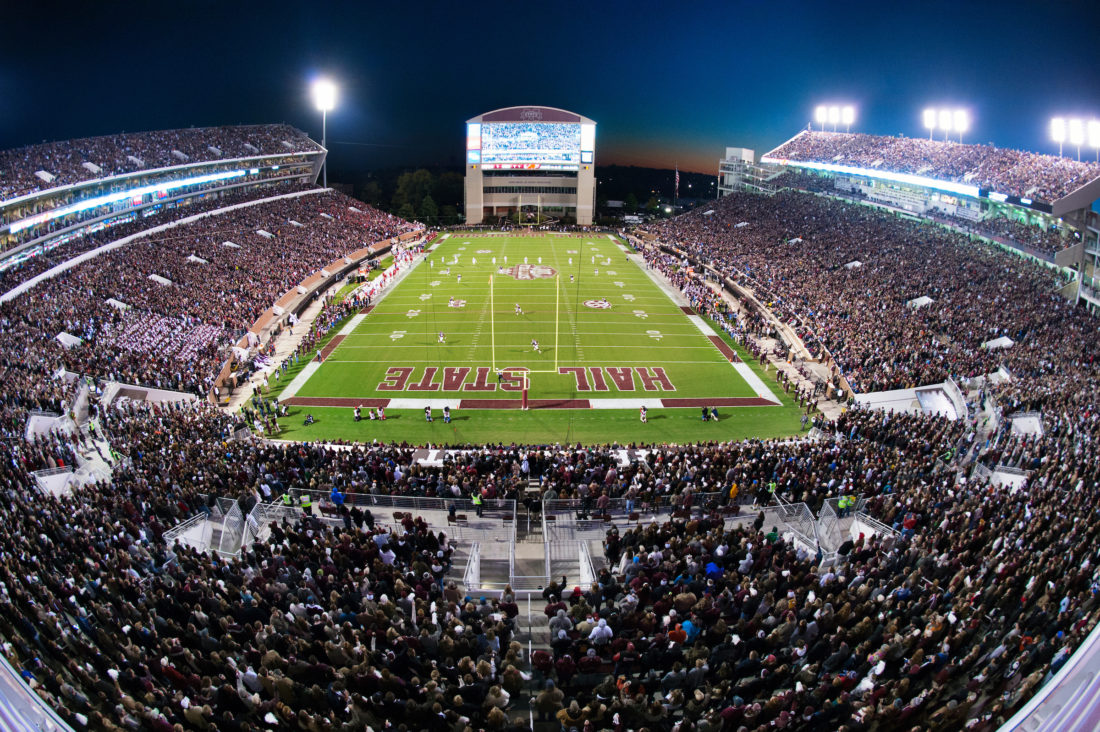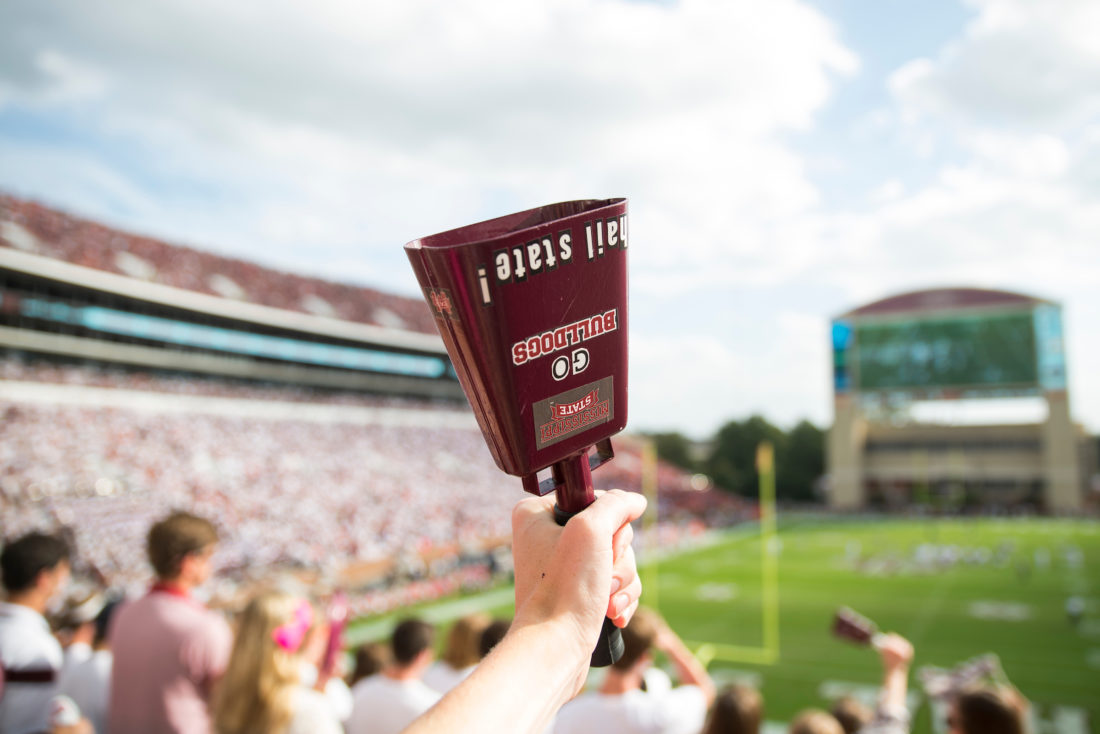When Mississippi State and Ole Miss football players stormed Scott Field at Davis Wade Stadium in Starkville on November 27, 2011, for their annual Egg Bowl matchup, a gigantic new message greeted them on the turf. Painted on the field in the north end zone, in place of the usual school or mascot name, was a refrain of Mississippi State’s fight song, “Hail State,” written as one word, all caps—and in a first that welcomed college football to the social media era, a now-ubiquitous hashtag in front.
At the time, billionaire entrepreneur and Dallas Mavericks owner Mark Cuban told Mashable.com that using the hashtag was “a fun way to involve social media at the game,” and to stir up emotions among the rival players and fans. Before the practice reached critical mass, however, the NCAA banned the use of hashtags and website URLs on collegiate football fields, categorizing them as advertising. While some sports commentators mocked the ruling, Mississippi State simply moved their #HAILSTATE message ten yards away to the roof of its Gridiron Club, directly behind the end zone.

It was a genius marketing move on the part of then-athletic director Scott Stricklin and his team, but they can’t be credited with inventing the phrase. The saga of “Hail State” began much earlier. In 1937, an ardent Mississippi State fan named Joseph Burleson Peavey wrote “Men of State (Hail, Mississippi State)” as the winning entry in a school contest and earned fifty bucks for his trouble. J.B., or “Mutt” Peavey, as he was known to friends, owned a music store in Meridian, Mississippi, where his son, Hartley, began building guitar amplifiers in the workspace upstairs. Hartley grew his nascent audio and musical instrument company into Peavey Electronics, a globally recognized brand.
Although part of the fight song for three quarters of a century, it was the 2011 end-zone hashtag that cemented the “Hail State” rallying cry and brought renewed excitement to State’s football program—just in time for the debut of quarterback Dak Prescott in 2012, and ahead of its first-ever number one national ranking in 2014. With the support of fans, “Hail State” became a runaway marketing and licensing success.
“Everybody can say ‘Go Dawgs’—there’s tons of bulldogs as mascots in collegiate athletics,” says Leah Beasley, deputy athletic director for external affairs with Mississippi State Athletics. “But ‘Hail State,’ as part of the fight song, has its history, and our students ran away with it.”


Since then, the use of “Hail State” has continued to grow. In 2014, the university relaunched its social media properties to lead with the Hail State handle and adopted it for its athletics web domain. Today, it appears in more than three-dozen official Twitter, Facebook, and Instagram handles for the athletics program, and is used in new campus construction and renovations.
“Whenever I travel for work—I was in Washington [recently], and I had a Mississippi State shirt on and somebody walked by and just said, ‘Hail State,’” says Beasley. “That’s all it takes, and you already have a camaraderie and a connection with those folks.”
This article is part of a G&G series that decodes widely used but little understood phrases in college football.








